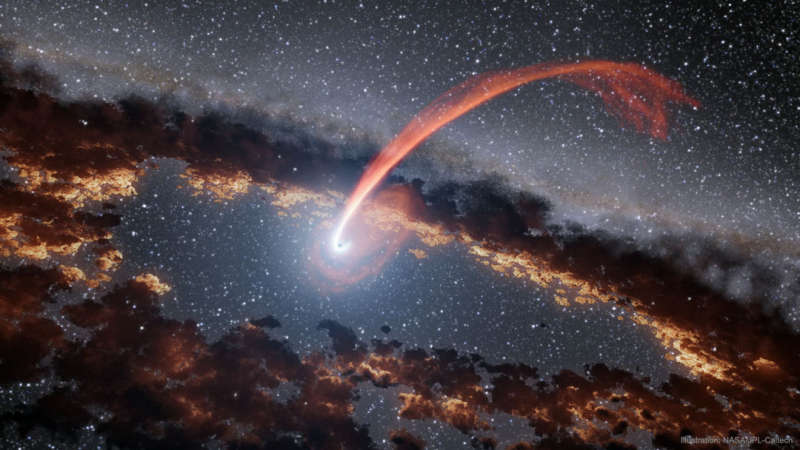Credit & Copyright: NASA,
JPL-Caltech
Explanation:
What happens to a star that goes near a black hole?
If the star directly impacts a massive
black hole,
then the star falls in completely -- and everything vanishes.
More likely, though, the star goes close enough to have the
black hole's gravity pull away the outer layers of the star, or
disrupt the star.
Then most of the star's gas does not fall into the
black hole.
These stellar
tidal disruption events can be as bright as a supernova,
and an increasing amount of them are being discovered by automated
sky surveys.
In the featured artist's illustration, a star has just passed a massive
black hole and sheds gas that continues to orbit.
The inner edge of a disk of gas and dust surrounding the black hole is heated by
the
disruption event and may glow long after the star
is gone.
1998 1999 2000 2001 2002 2003 2004 2005 2006 2007 2008 2009 2010 2011 2012 2013 2014 2015 2016 2017 2018 2019 2020 2021 2022 2023 2024 |
Январь Февраль Март Апрель Май Июнь Июль Август Сентябрь Октябрь Ноябрь Декабрь |
NASA Web Site Statements, Warnings, and Disclaimers
NASA Official: Jay Norris. Specific rights apply.
A service of: LHEA at NASA / GSFC
& Michigan Tech. U.
|
Публикации с ключевыми словами:
black hole - черные дыры
Публикации со словами: black hole - черные дыры | |
См. также:
Все публикации на ту же тему >> | |
